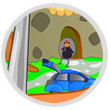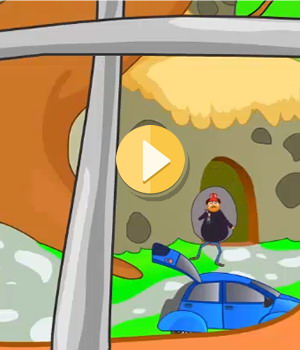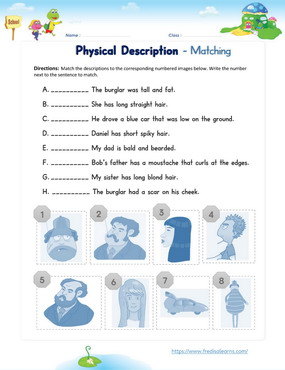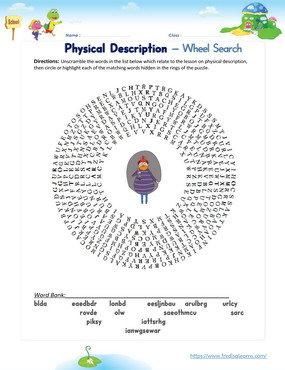Unit 3: Physical Description
Objectives:
- This lesson teaches English learners how to ask and provide physical descriptions of people and things.
- ESL kids will learn new adjectives to describe appearance.
- The lesson teaches the use of the preposition ‘like’ to ask for description.
- The grammatical focus of the lesson is on the past progressive tense.
Main Lesson Materials & Study Steps
1st –This cartoon animated video features a short dialogue, followed by vocabulary and sentence breakdown. It is essential for introducing the words, phrases, grammar, spelling and sentences of the lesson in context. Watch repeatedly to master the content. The video plays on any device.
2nd – Then the student plays this fun game after watching the video, to practice the contents of the lesson. The game reviews key vocabulary, grammar and sentences from the lessons. This game can be played on any device.
3rd – Finally the learner takes this test of the unit. The score of this test is captured in the LMS and gives educators an idea of how well their learner is doing. The test opens on any device – mobile & PC.
Worksheets for the Unit
The worksheets below are useful for offline and classroom activities. These printable exercises directly correlate with the above lesson 'Physical Description'. Every worksheet comes with an answer sheet on the second page for educators.
Already a Member?
Not a member yet?
Lesson Story:
Freddie and Lisa are at home when they hear banging at Bob’s house. The children look through the window to find a burglar loading Bob and Sally’s things into a blue car. They call the police who do not arrive in time. An officer later asks Freddie and Lisa for description of the burglar. Thanks to their description, the police are able to catch the thief and recover the stolen items.
Vocabulary:
Adjectives: physical appearance
| · tall |
| · fat |
| · bald |
| · bearded |
| · moustache |
| · brown hair |
| · curly hair |
| · straight hair |
| · blond hair |
| · short hair |
| · spiky hair |
Other words to describe
| · scar |
| · cheek |
| · blue jeans |
| · burglar |
| · police |
| · low |
| · noise |
| · drive |
Using the preposition ‘like’ to ask for description
What did he look like?
- He was tall and fat.
What was his hair like?
- He had short curly hair.
Other ways to describe
What was he wearing?
- He was wearing blue jeans.
How did he drive his car?
- He drove his car very fast.
Grammar: Past progressive
What was he wearing?
- He was wearing blue jeans.
What was he driving?
- He was driving a blue car.
| Present progressive | Past progressive |
| · is wearing | · was wearing |
| · is driving | · was driving |
This lesson is part of the Level 7 English course.
Unit 3: Physical Description is an exciting lesson that aims to teach English learners how to provide and ask for physical descriptions of people and things. This unit introduces new adjectives to describe appearance, enabling ESL kids to expand their vocabulary and describe physical characteristics in greater detail.
The lesson emphasizes the use of ‘like’ as a preposition, which is a powerful tool in asking for descriptions. Children will learn how to use this preposition to prompt detailed responses about a person's appearance.
The grammatical focus of this lesson is on the past progressive tense. The past progressive tense is an essential element of English grammar and is widely used in everyday communication. Through this lesson, children will learn how to use this tense correctly in sentences and gain confidence in expressing themselves in English.
Unit 3: Physical Description is a fantastic opportunity for children to improve their English skills while having fun. With engaging activities and exercises, this lesson will enable kids to describe people and things with ease and confidence.
Overall, this lesson is an excellent way for ESL kids to broaden their vocabulary and gain a better understanding of the English language. By the end of the lesson, children will be able to ask for physical descriptions, use new adjectives to describe appearance, and correctly use the past progressive tense.














